Themed collection Structural Macrocyclic Supramolecular Chemistry

Front cover

Back cover

Contents list
Structural macrocyclic supramolecular chemistry
Welcome to this CrystEngComm themed issue on structural macrocyclic supramolecular chemistry.
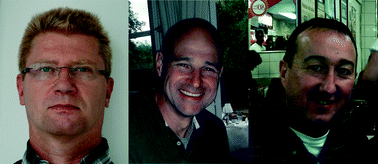
CrystEngComm, 2014,16, 3644-3645
https://doi.org/10.1039/C4CE90042A
Metal–organic calixarene capsules: the evolution of controlled assembly
Assembly strategies used to construct metal–organic capsules are discussed, paying particular attention to their recent application with the emerging p-carboxylatocalixarenes.
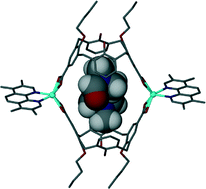
CrystEngComm, 2014,16, 3655-3666
https://doi.org/10.1039/C3CE42169D
Solid state assembly of cyclic α-peptoids
In cyclic alpha-peptoids, inter-annular CH⋯OC hydrogen bonds provide face to face or side by side arrangement of macrocycles mimicking the beta-sheet secondary structure in proteins. Side chains may promote the formation of peptoid nanotubes, acting as pillars among neighbouring macrocycles.
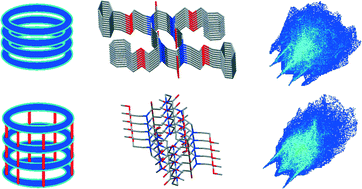
CrystEngComm, 2014,16, 3667-3687
https://doi.org/10.1039/C3CE42456A
Fine tuning of crystal architecture by intermolecular interactions: synthon engineering
The term “synthon engineering” is introduced for the directed manipulation of the molecular packing architecture including the system of secondary interactions caused by the respectively fine tuned synthons.
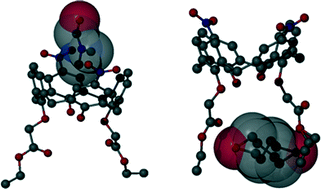
CrystEngComm, 2014,16, 3646-3654
https://doi.org/10.1039/C3CE42387E
Packing arrangements of copper-seamed C-alkylpyrogallol[4]arene nanocapsules with varying chain lengths
The synthesis and structural elucidation of copper-seamed C-alkylpyrogallol[4]arene hexamers with different tail lengths (n = 3, 7, 9) reveal differences in packing arrangements.
![Graphical abstract: Packing arrangements of copper-seamed C-alkylpyrogallol[4]arene nanocapsules with varying chain lengths](/en/Image/Get?imageInfo.ImageType=GA&imageInfo.ImageIdentifier.ManuscriptID=C3CE42412J&imageInfo.ImageIdentifier.Year=2014)
CrystEngComm, 2014,16, 3718-3721
https://doi.org/10.1039/C3CE42412J
Salt formation affects the conformational and assembly properties of p-carboxylatocalix[4]arenes
The conformational properties and self-assembly behaviour of the p-carboxylatocalix[4]arenes are markedly influenced by salt formation with 2-aminopyridine that can also act simultaneously as a template.
![Graphical abstract: Salt formation affects the conformational and assembly properties of p-carboxylatocalix[4]arenes](/en/Image/Get?imageInfo.ImageType=GA&imageInfo.ImageIdentifier.ManuscriptID=C3CE42523A&imageInfo.ImageIdentifier.Year=2014)
CrystEngComm, 2014,16, 3712-3717
https://doi.org/10.1039/C3CE42523A
A ladder-type coordination polymer constructed from two macrocyclic units – calix[4]arene tetracarboxylate and azamacrocyclic nickel(II) complex
Spatially-separated polar channels and non-polar voids were shown to coexist in the crystal of a new type of coordination polymer formed by a hexaazamacrocyclic nickel(II) cation and a lower rim substituted calix[4]arene tetracarboxylate trianion.
![Graphical abstract: A ladder-type coordination polymer constructed from two macrocyclic units – calix[4]arene tetracarboxylate and azamacrocyclic nickel(ii) complex](/en/Image/Get?imageInfo.ImageType=GA&imageInfo.ImageIdentifier.ManuscriptID=C3CE42279H&imageInfo.ImageIdentifier.Year=2014)
CrystEngComm, 2014,16, 3707-3711
https://doi.org/10.1039/C3CE42279H
Synthesis and solid-state structures of a macrocyclic receptor based on the 2,6-bis(2-anilinoethynyl)pyridine scaffold
We report the synthesis and X-ray structures of a macrocyclic fluorophore that binds water or HCl, accommodating either molecule in nearly identical environments.
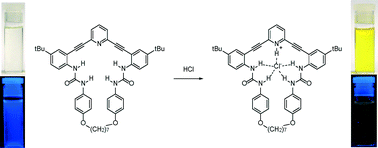
CrystEngComm, 2014,16, 3703-3706
https://doi.org/10.1039/C3CE42307G
Unexpected crystallization of the metastable tubular coordination polymer of cucurbit[6]uril with magnesium ions which spontaneously transforms into a discrete coordination complex
We report on the kinetic crystallization of the tubular coordination polymer constructed from cucurbit[6]uril and magnesium ions. The metastable phase spontaneously converts into a thermodynamically favored discrete coordination complex.
![Graphical abstract: Unexpected crystallization of the metastable tubular coordination polymer of cucurbit[6]uril with magnesium ions which spontaneously transforms into a discrete coordination complex](/en/Image/Get?imageInfo.ImageType=GA&imageInfo.ImageIdentifier.ManuscriptID=C3CE42287A&imageInfo.ImageIdentifier.Year=2014)
CrystEngComm, 2014,16, 3699-3702
https://doi.org/10.1039/C3CE42287A
A ferrocene imidazolium-based macrocycle as an electrochemical chemosensor for halide anions
C4-H and C5-H protons of the imidazolium heterocycle have been exploited as a binding site for anion recognition.
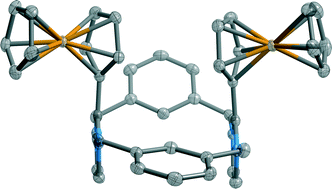
CrystEngComm, 2014,16, 3694-3698
https://doi.org/10.1039/C3CE41851K
Lanthanide coordination polymers with pyridyl-N-oxide or carboxylate functionalised host ligands
Lanthanide coordination polymers with ladder-like structures or a decorated kagome dual network are formed from pyridine-N-oxide or carboxylate functionalised cyclotriveratrylene-type ligands.
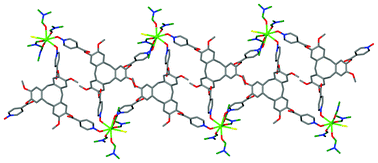
CrystEngComm, 2014,16, 3688-3693
https://doi.org/10.1039/C3CE40776D
Structural characterization of inclusion complexes of para-sulphonato-calix[8]arene with 1,2-bis(4-pyridyl)-ethane and 1,3-bis(4-pyridyl)-propane. New ‘double cone’ and ‘up–flat–down’ conformations of para-sulphonato-calix[8]arene
Two new conformations of para-sulphonato-calix[8]arene have been found in supramolecular complexes with BPE and BPP, the gas take-up has been demonstrated for S8C–BPE complex.
![Graphical abstract: Structural characterization of inclusion complexes of para-sulphonato-calix[8]arene with 1,2-bis(4-pyridyl)-ethane and 1,3-bis(4-pyridyl)-propane. New ‘double cone’ and ‘up–flat–down’ conformations of para-sulphonato-calix[8]arene](/en/Image/Get?imageInfo.ImageType=GA&imageInfo.ImageIdentifier.ManuscriptID=C3CE42303D&imageInfo.ImageIdentifier.Year=2014)
CrystEngComm, 2014,16, 4399-4405
https://doi.org/10.1039/C3CE42303D
Structure and thermodynamics of a multimeric cavitand assembly
Assembly of a pentameric supramolecular architecture.
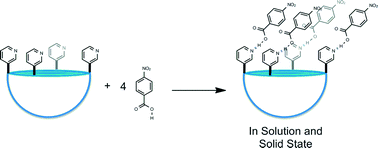
CrystEngComm, 2014,16, 3796-3801
https://doi.org/10.1039/C3CE42447B
High field solid state 13C NMR spectroscopy of cucurbituril materials
Multiple 13C NMR resonances for the C![[double bond, length as m-dash]](https://www.rsc.org/images/entities/char_e001.gif) O, CH and CH2 groups in crystalline cucurbituril compounds provide fingerprints for different structures.
O, CH and CH2 groups in crystalline cucurbituril compounds provide fingerprints for different structures.
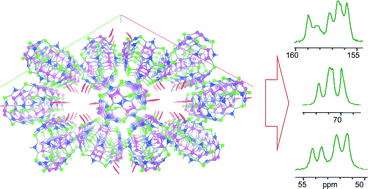
CrystEngComm, 2014,16, 3788-3795
https://doi.org/10.1039/C3CE42467G
Experiences with applications of macromolecular tools in supramolecular crystallography
The application of “routine” protein molecular replacement method enables solving the crystal structure of a chiral organic capsule.
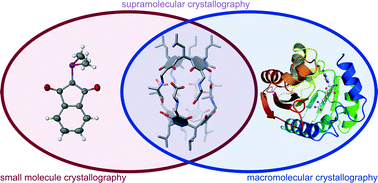
CrystEngComm, 2014,16, 3773-3780
https://doi.org/10.1039/C3CE42288G
Molecular tectonics: generation of grid and porous diamondoid coordination networks by calixarene based tectons
Combinations of tetrakis meta-pyridyl appended tetrathia- or tetrathiamercapto-calix[4]arene in 1,3-A conformation with MX2 (M = Cd, Co or Fe, X = Cl or Br), behaving as a neutral metallatecton, lead to 2D grid type and 3D porous diamondoid coordination networks.
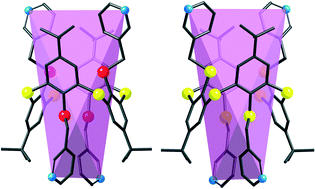
CrystEngComm, 2014,16, 3765-3772
https://doi.org/10.1039/C3CE42305K
Anti-sieve effect in guest inclusion by thiacalix[4]arene giving a surge in thermal stability of its clathrates prepared by solid-phase guest exchange
The unusual exclusion of smaller guests by host may be avoided by solid-phase exchange in preparation of clathrates, which thus become extremely thermally stable.
![Graphical abstract: Anti-sieve effect in guest inclusion by thiacalix[4]arene giving a surge in thermal stability of its clathrates prepared by solid-phase guest exchange](/en/Image/Get?imageInfo.ImageType=GA&imageInfo.ImageIdentifier.ManuscriptID=C3CE42304B&imageInfo.ImageIdentifier.Year=2014)
CrystEngComm, 2014,16, 3781-3787
https://doi.org/10.1039/C3CE42304B
A C-shaped p-sulfonatocalix[4]arene-based supermolecule exhibiting mutual-inclusion and bilayer insertion of dipicolinate
A p-sulfonatocalix[4]arene-based, C-shaped supermolecule, [Ce3(PDA)4(C4AS)2·13H2O](NO3)·25H2O 1 was prepared and characterized by single crystal X-ray structural analysis, thermal methods (TG, DSC and hot-stage microscopy) and Hirshfeld analysis.
![Graphical abstract: A C-shaped p-sulfonatocalix[4]arene-based supermolecule exhibiting mutual-inclusion and bilayer insertion of dipicolinate](/en/Image/Get?imageInfo.ImageType=GA&imageInfo.ImageIdentifier.ManuscriptID=C3CE42358A&imageInfo.ImageIdentifier.Year=2014)
CrystEngComm, 2014,16, 3749-3757
https://doi.org/10.1039/C3CE42358A
Deprotonation of resorcinarenes by mono- and diamine bases: complexation and intermolecular interactions in the solid state
The deprotonation of a resorcinarene by small organic bases results in 1 : 1 inclusion and 1 : 2 pseudo-capsular ion-pair complexes.

CrystEngComm, 2014,16, 3758-3764
https://doi.org/10.1039/C3CE42291G
Self-assembly of discrete and polymeric metallosupramolecular architectures from cyclen-derived ligands
Four new discrete and polymeric coordination compounds have been prepared and analysed, based on two divergent macrocycle-derived ligands bearing pendant carboxylic acid or nitrile functional groups.
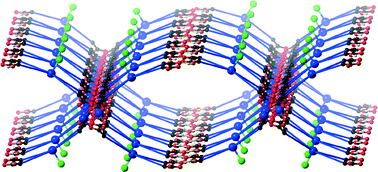
CrystEngComm, 2014,16, 3737-3748
https://doi.org/10.1039/C3CE42141D
Observation of strong halogen bonds in the solid state structures of bis-haloimidazolium macrocycles
Strong halogen bonds are observed in the solid state structures of chloro-, bromo-, and iodoimidazolium macrocycles with bromide and nitrate anions.
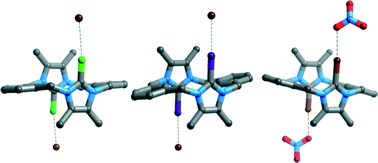
CrystEngComm, 2014,16, 3722-3729
https://doi.org/10.1039/C3CE41944D
Simple dinitro substituted calix[4]arene forming a honeycomb-like architecture with hydrophobic channels
A conformationally flexible calix[4]arene exhibits either a porous or a non-porous solid state structure depending on the employed solvent system.
![Graphical abstract: Simple dinitro substituted calix[4]arene forming a honeycomb-like architecture with hydrophobic channels](/en/Image/Get?imageInfo.ImageType=GA&imageInfo.ImageIdentifier.ManuscriptID=C3CE41819G&imageInfo.ImageIdentifier.Year=2014)
CrystEngComm, 2014,16, 3730-3736
https://doi.org/10.1039/C3CE41819G
About this collection
This themed issue, guest edited by Professors Len Barbour, Len MacGillivray and Kari Rissanen showcases the latest solid-state research on supramolecular complexes utilising macrocyclic compounds as essential structural elements.